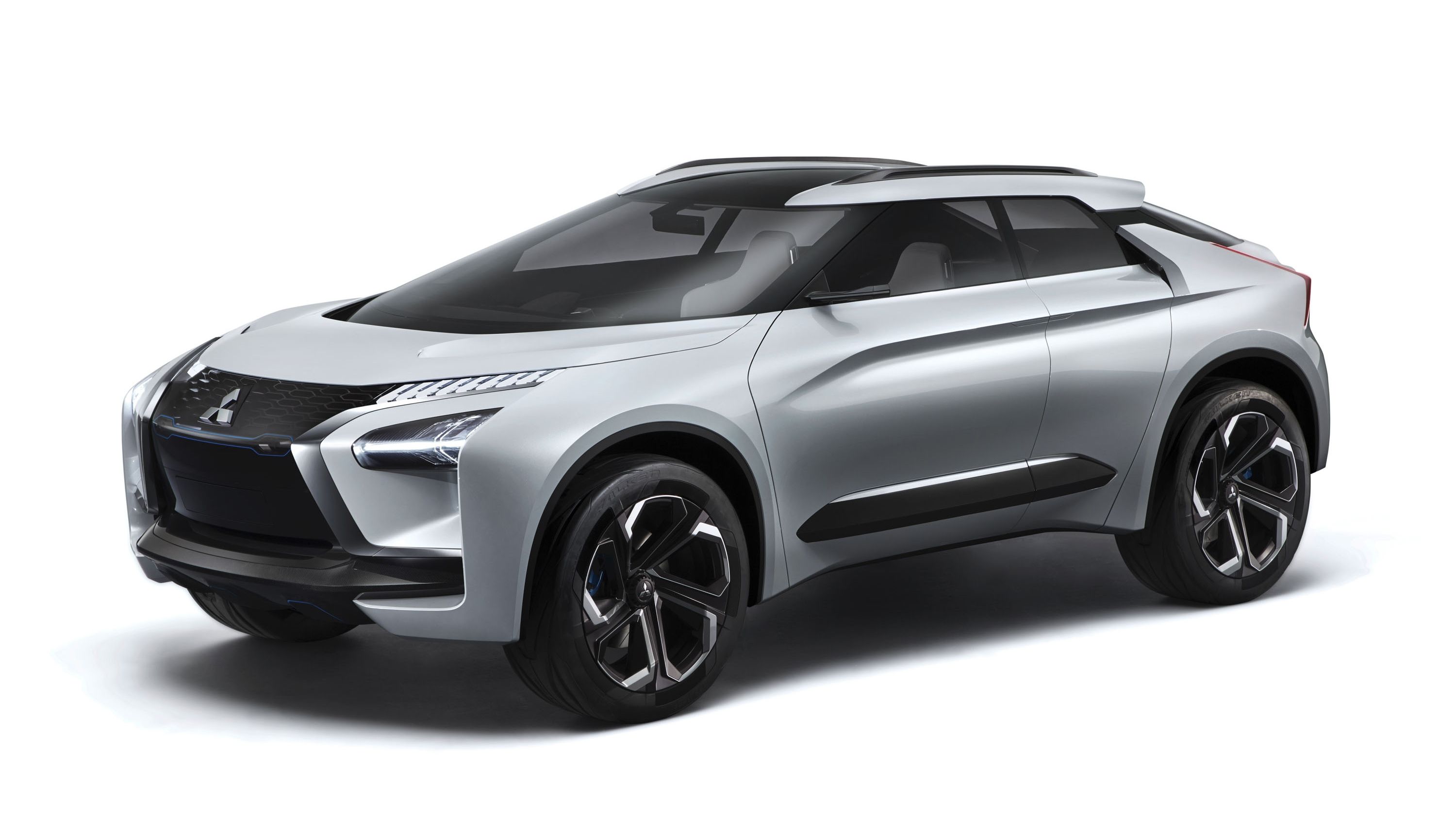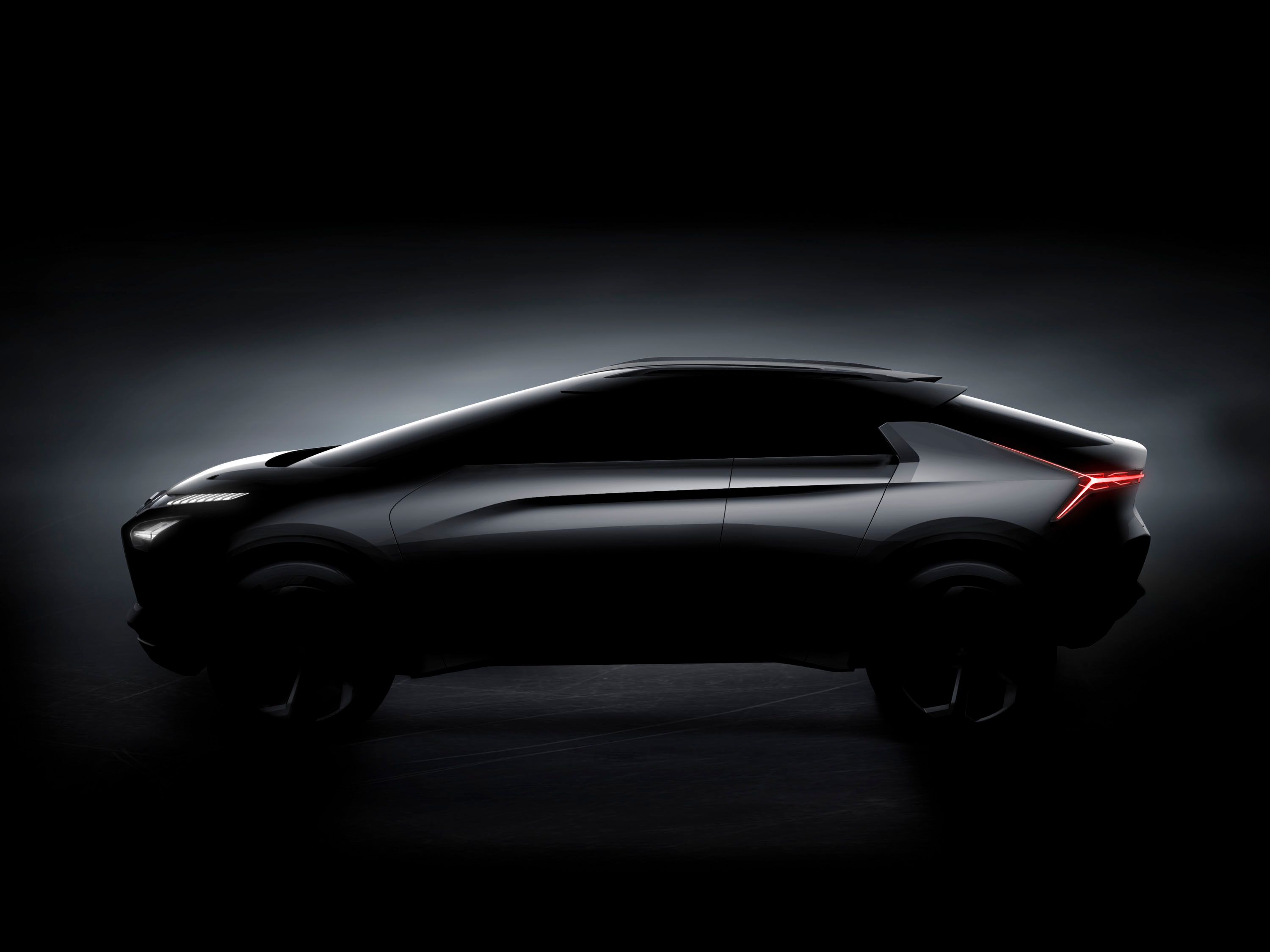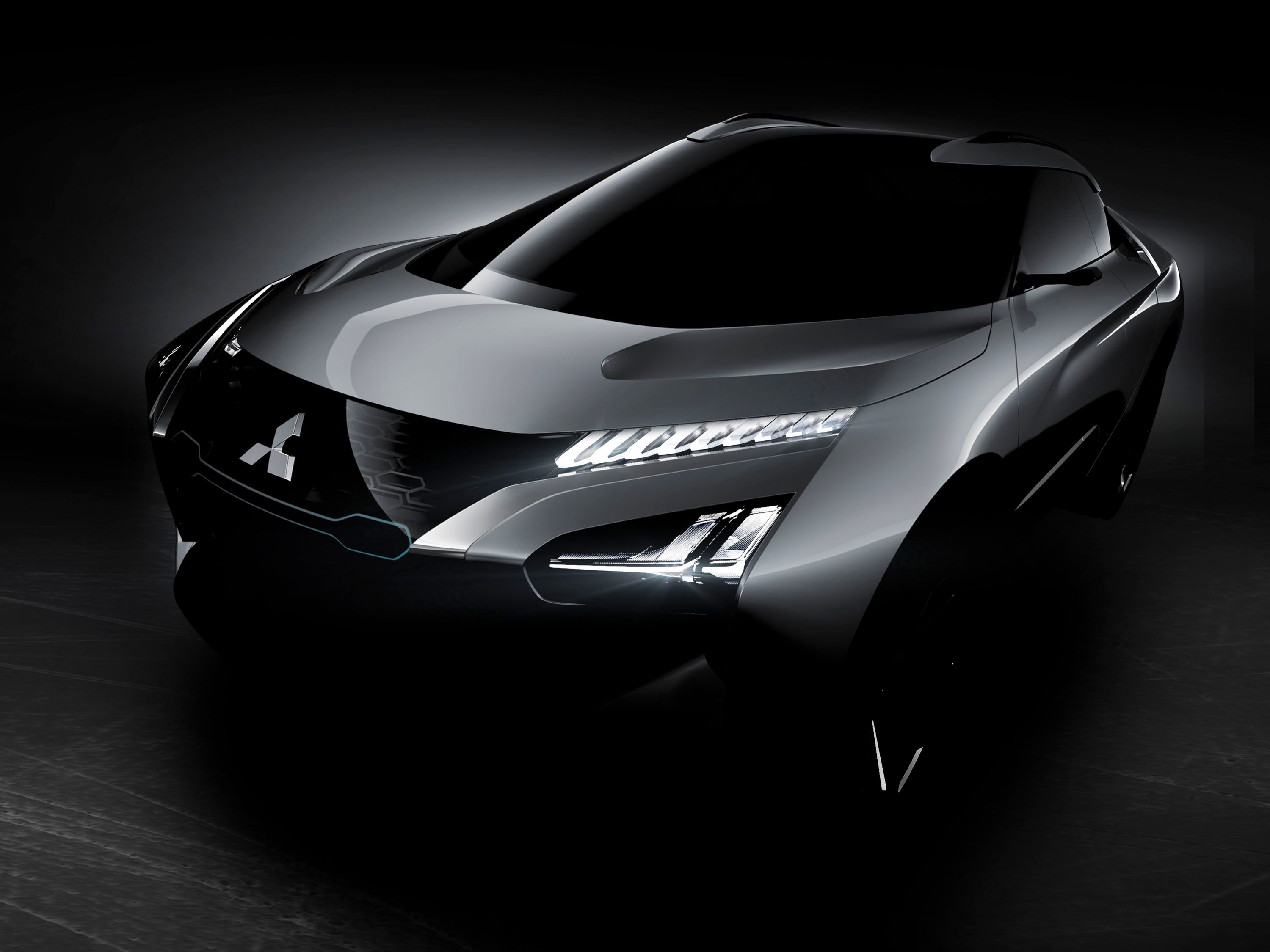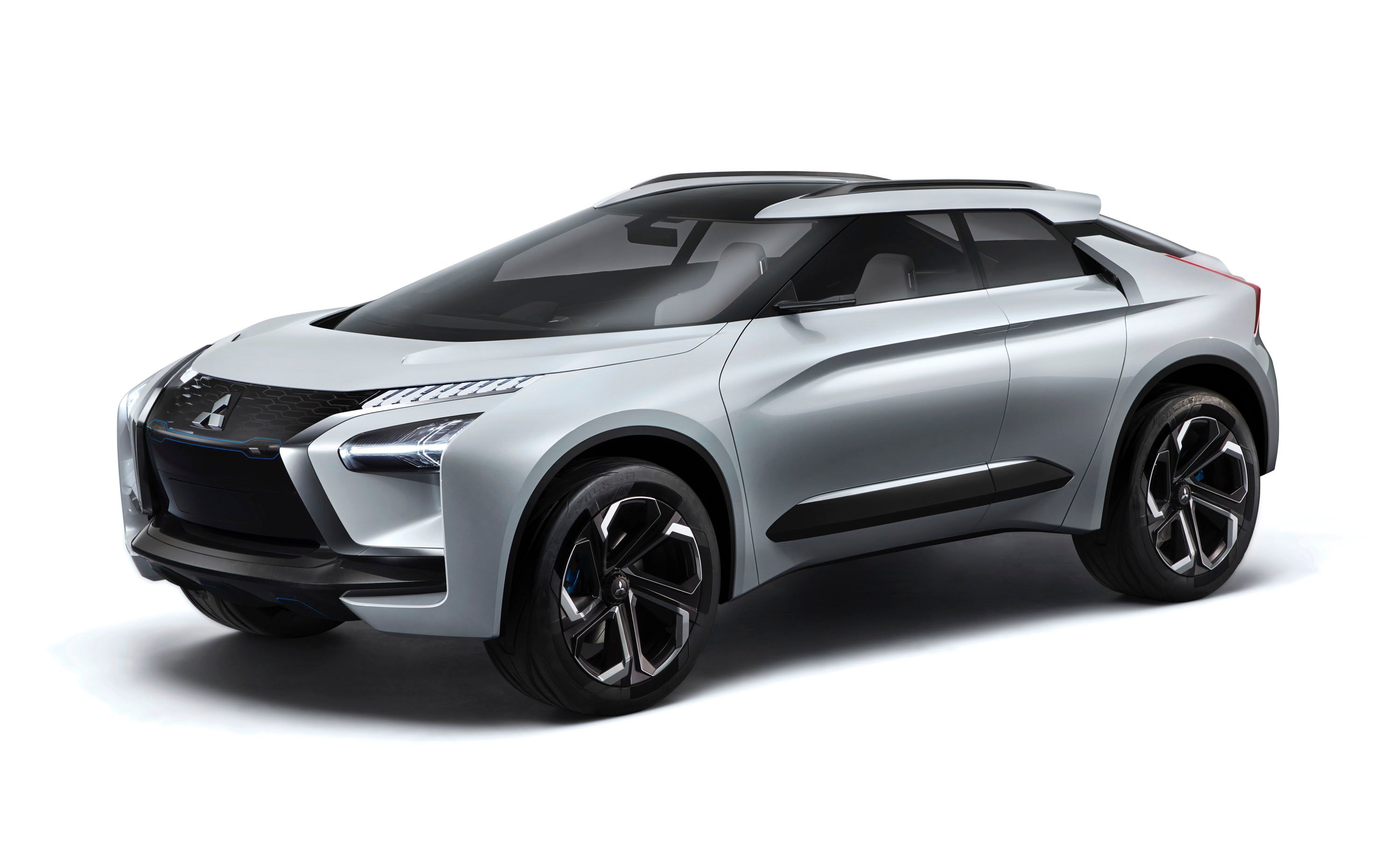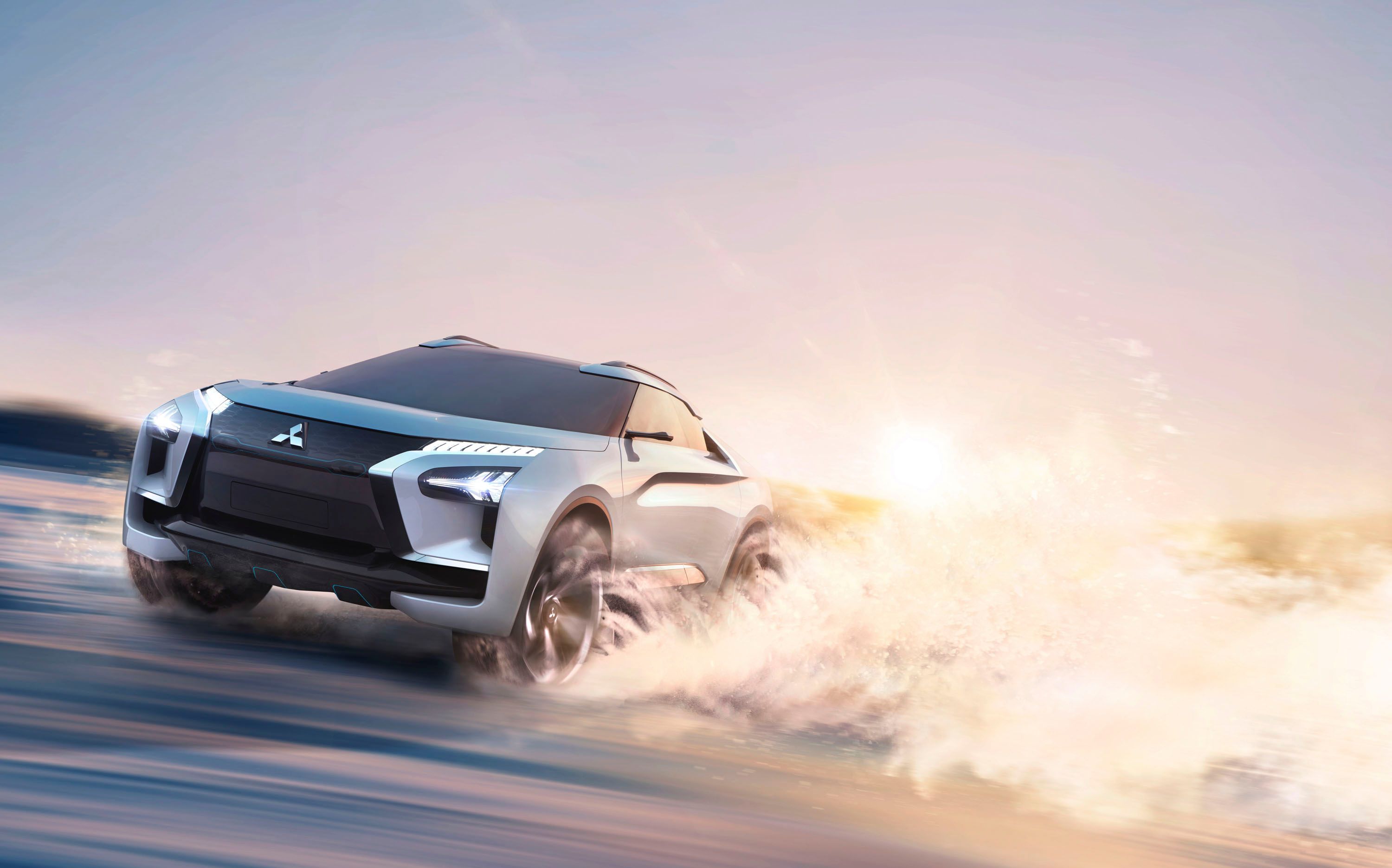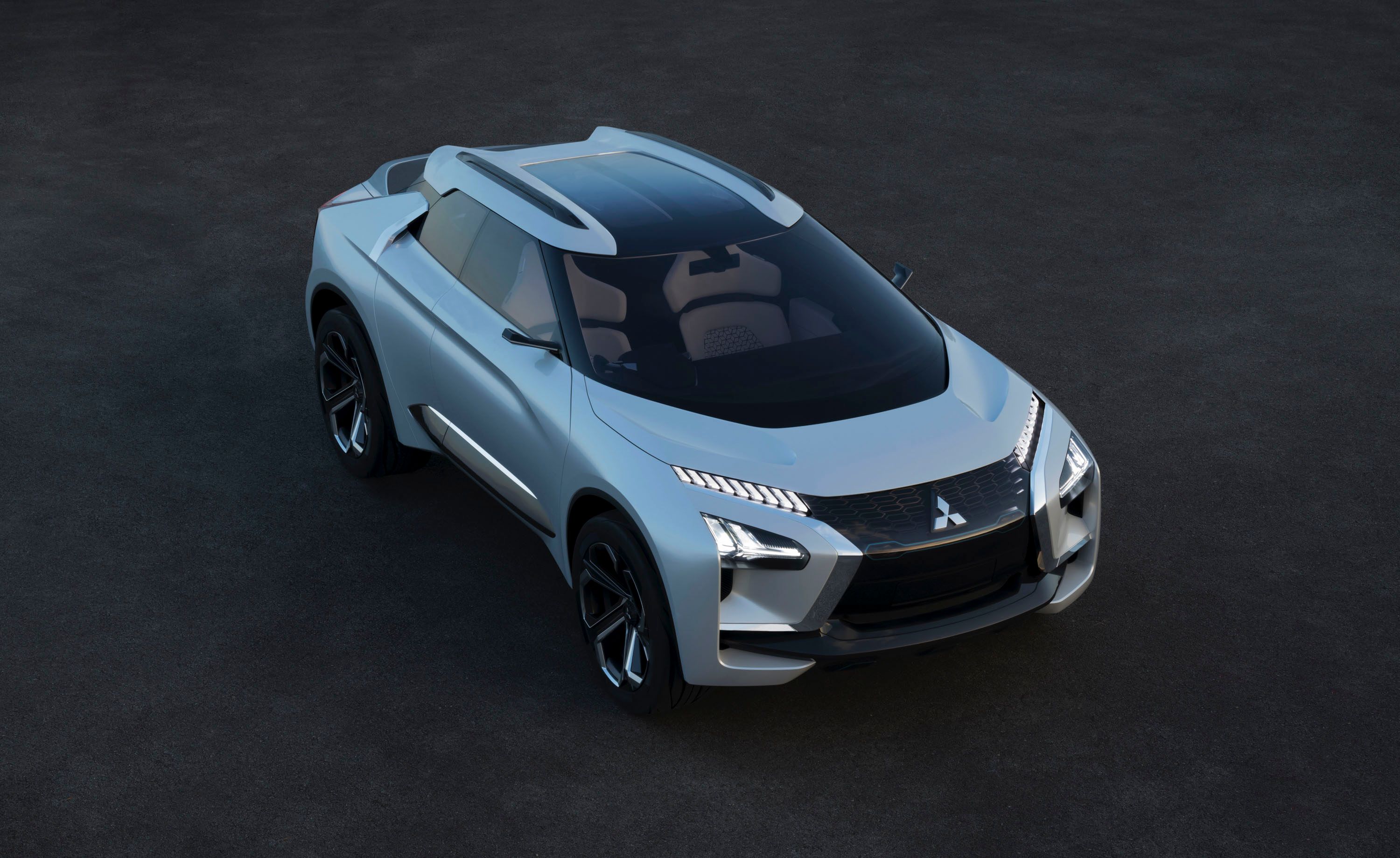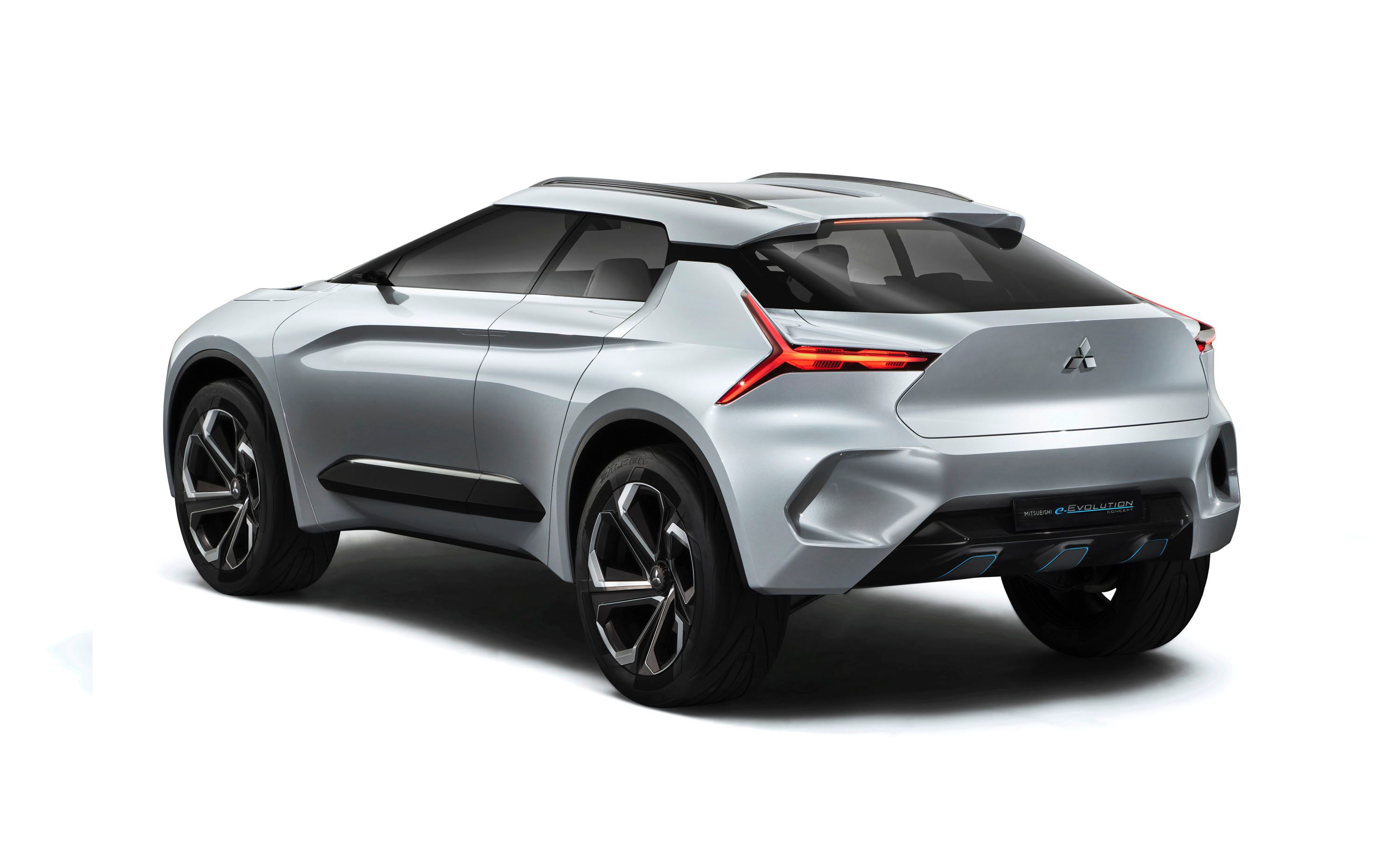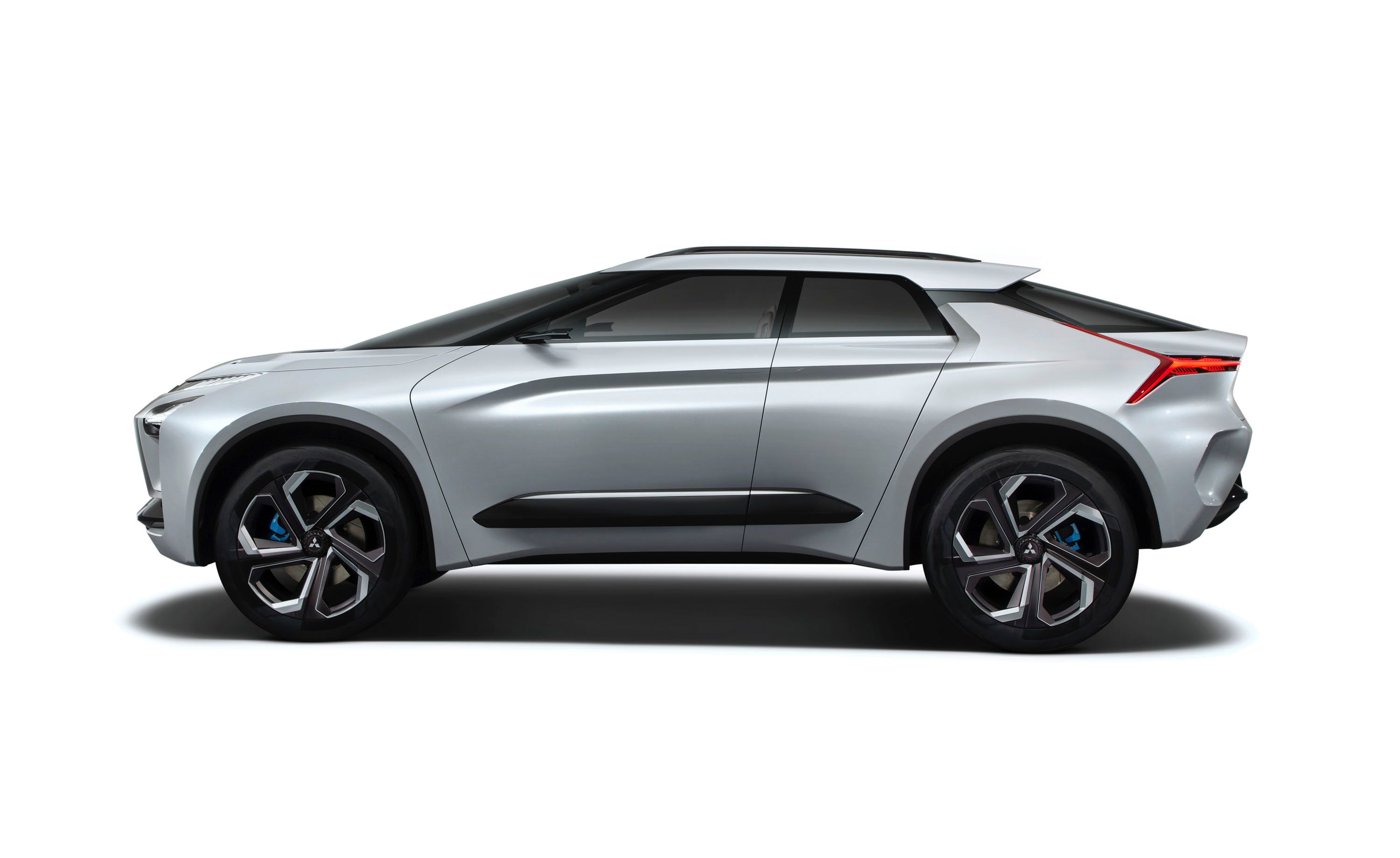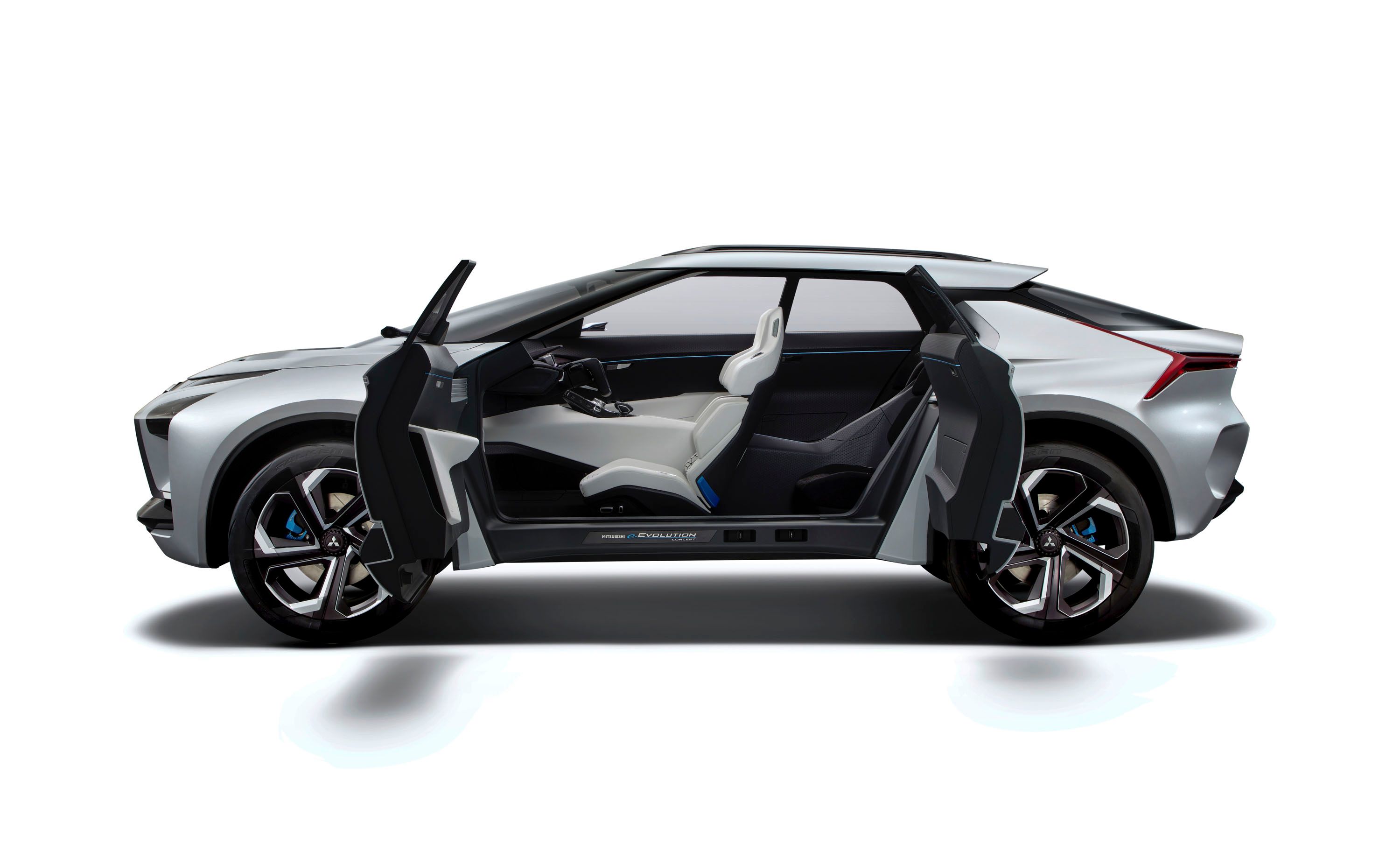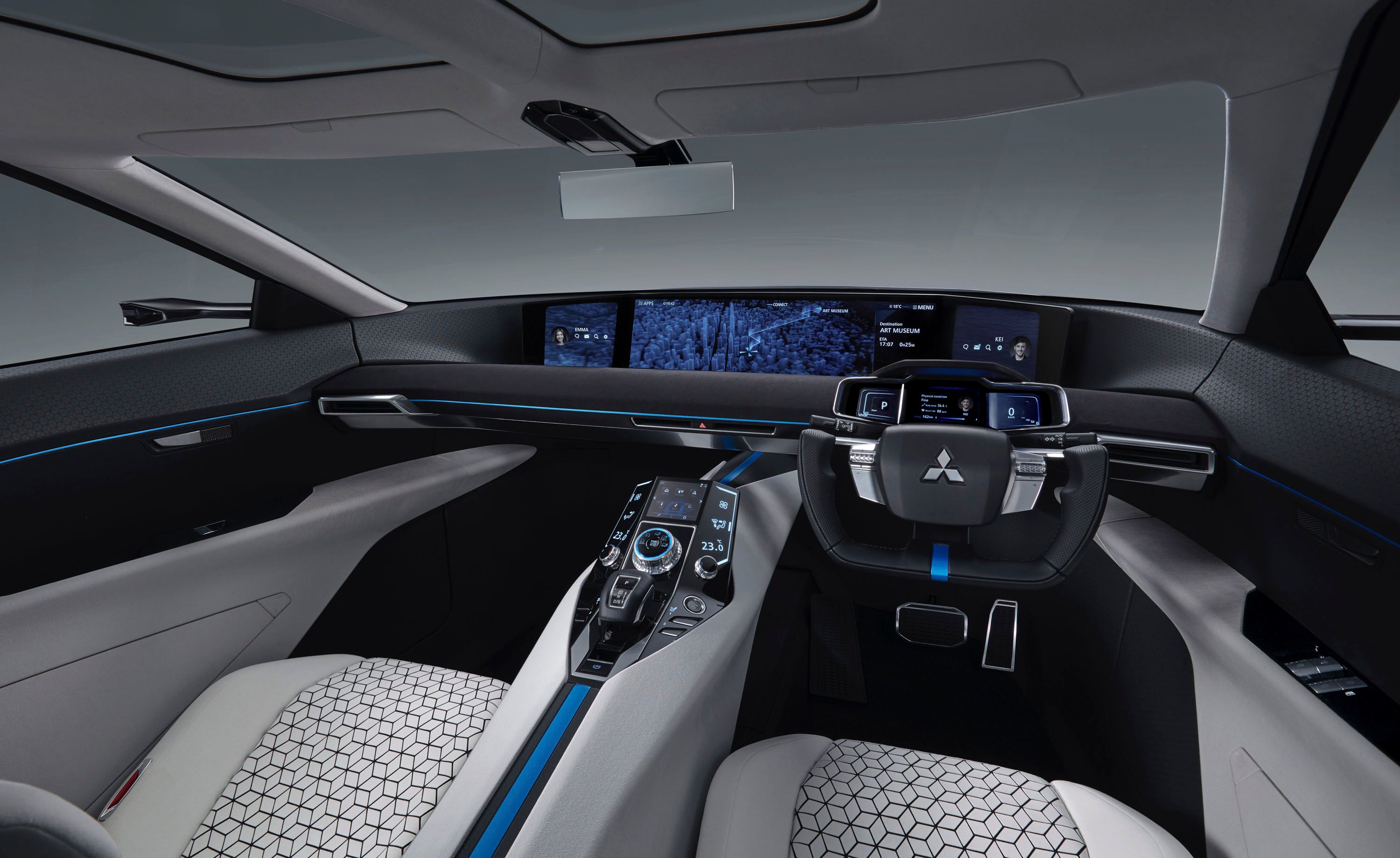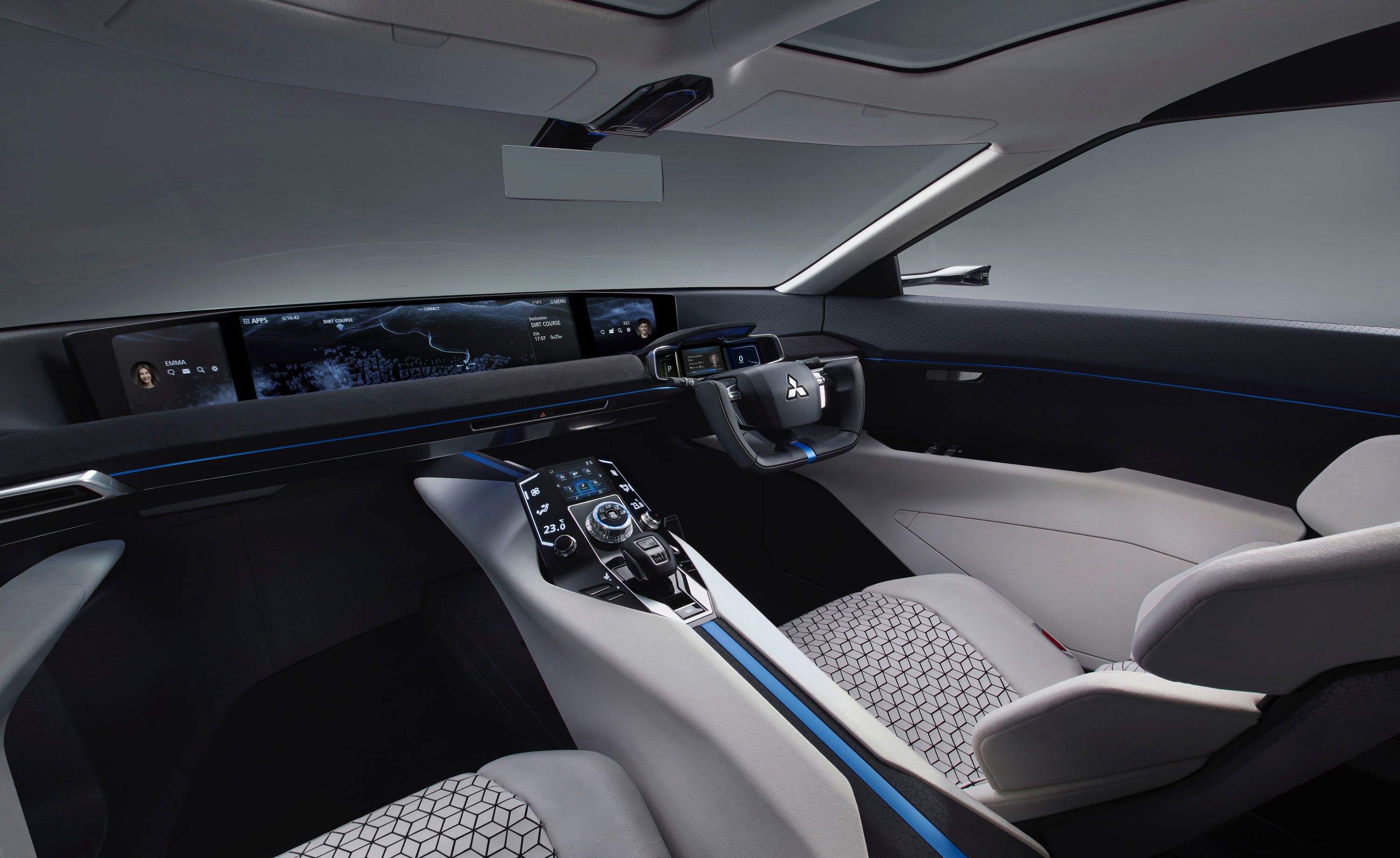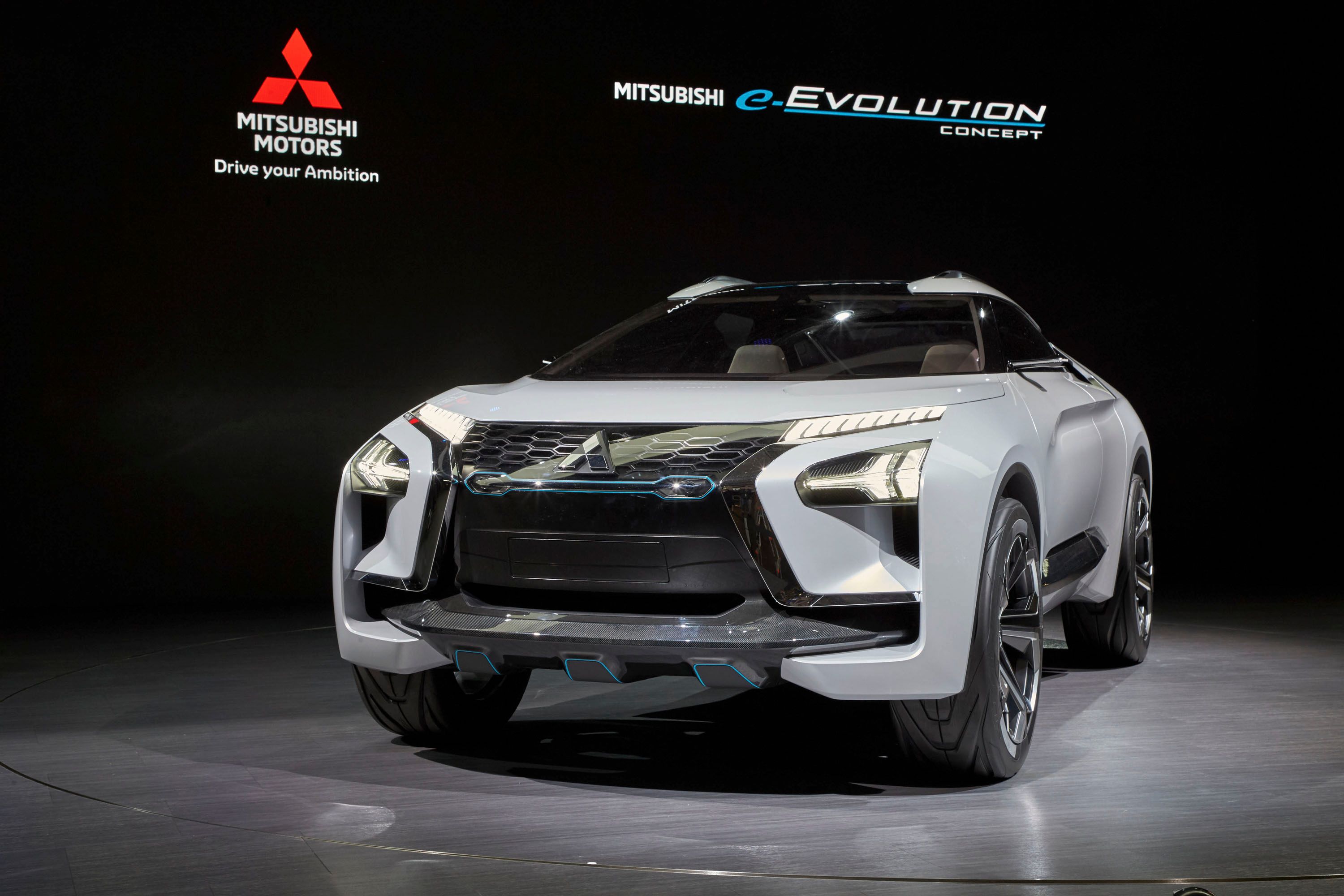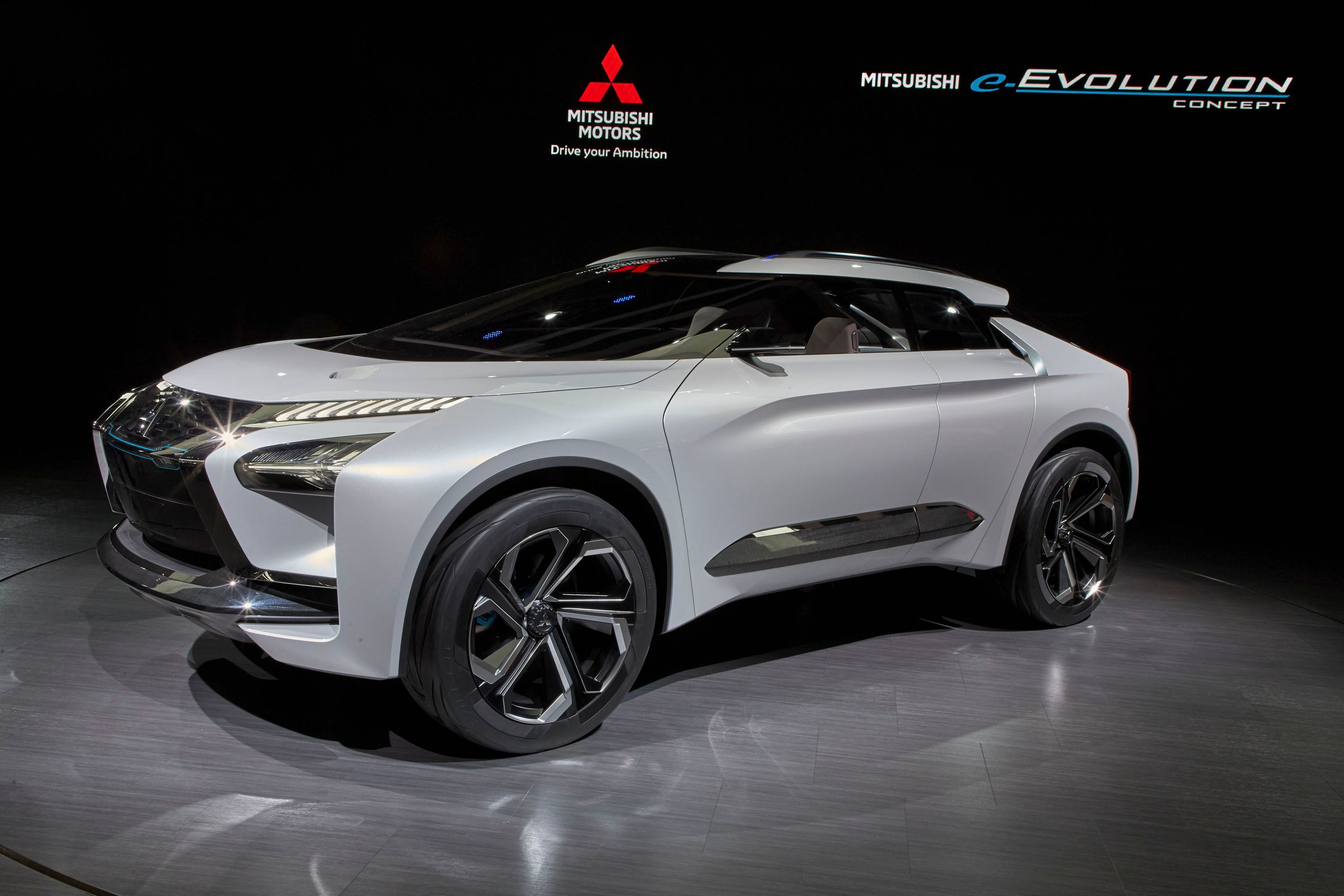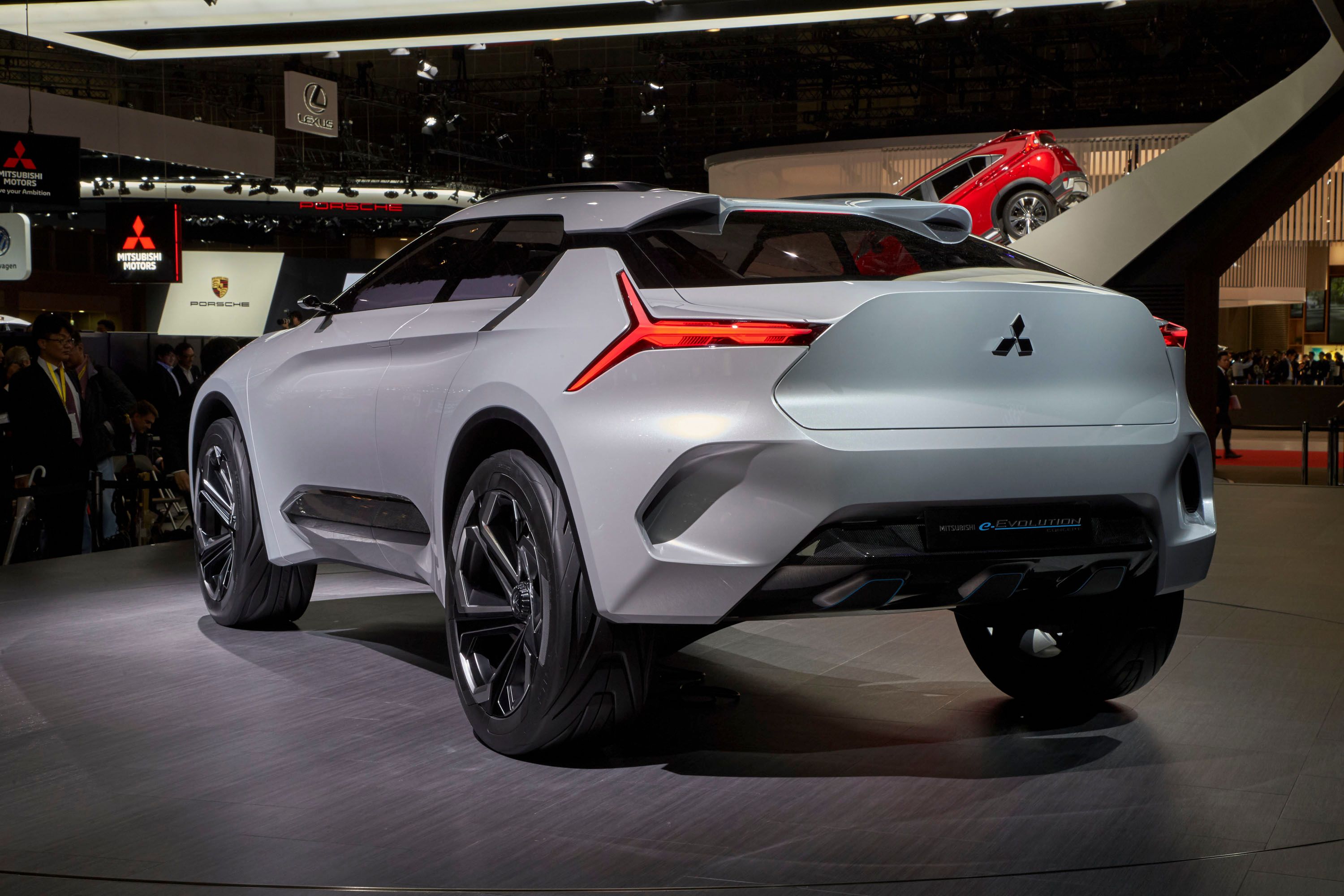The Tokyo Motor Show is nearly upon us, which means we’re preparing for a barrage of wild concepts and cool sci-fi weirdness. Mitsubishi is already getting on the action, unveiling its new e-Evolution a few weeks ahead of the big sheet pull. The design study is framed as a preview of forthcoming technology and exterior styling from the automaker, and includes a focus on all-electric propulsion mated with an AWD SUV body style. The e-Evolution also gets a few interesting driver assistance technologies, like an onboard AI that customizes various onboard systems to your preferences and will even coach you on how to be a better driver. The e-Evolution is just one of 12 vehicles Mitsubishi is bringing to the show, so we’ll have to see what else will make an appearance, but so far, the e-Evolution is one of the more ambitious concepts we’ve seen from Mitsu in a while.
Of course, we have to address the elephant in the room – the repurposed Evolution nameplate. Just last year, Mitsu killed off the Lancer Evo, the iconic rally-bred sedan that churned major terra in the WRC. Purists will undoubtedly balk at the thought of an all-electric, AI-infused SUV carrying the torch lit by that four-door monster, and rightfully so, but either way, it looks like change is inevitable here. Read on for the full details.
Updated 10/25/2017: The Mitsubishi e-Evolution Concept just debuted at the Tokyo Motor Show! Check out all the pics and details below.
Continue reading to learn more about the Mitsubishi e-Evolution Concept.
2017 Mitsubishi e-Evolution Concept
- Make: Array
- Model: 2017 Mitsubishi e-Evolution Concept
- [do not use] Vehicle Model: Array
Exterior
For starters, the Mitsubishi e-Evolution Concept is a look at what the Japanese automaker has planned in terms of exterior styling and design. Mitsu has dubbed the design language as “Robust & Ingenious,” and seeks to combine snappy good looks, power, and functionality with off-roading agility and 4WD capability. It’s a fresh new approach for the company, which makes sense considering the degree to which Mitsubishi hopes to reinvent itself. But does it work?
To answer that, let’s start in front, where we find a fascia Mitsu describes as “Dynamic Shield.” This is composed of a black grille covered by glass, behind which hides an array of sensors and cameras, all of which are required to run the onboard autonomous systems. Just below the headlights, you’ll find a duo of intakes, which direct air through the bumper and into the wheel wells to help cool the brakes.
Moving towards the rear is a heavily angled windshield, which stretches into the hood and trunk to give the whole profile a sort of triangule shape. Subtle roof bars punctuate the edges of the roof, while short overhangs give it a sporty appearance. Small, fin-shaped intakes were added past the C-pillars to direct air through the rear bumper, enhancing the SUV’s aerodynamics in the process.
In back, there’s a hexagonal shape for the tail, which Mitsubishi says was inspired by the rear spare tire cover of the Mitsubishi Shogun, an older SUV model from the brand.
While certainly striking to look at, the Mitsubishi e-Evolution Concept isn’t exactly the prettiest thing in the world. Rather, it’s more like a compilation of small details and features that give it a futuristic, sci-fi kind of vibe, which, of course, is to be expected considering the advanced interior technology features.
Interior
In some ways, the Mitsubishi e-Evolution’s interior is a development of the Mitsubishi eX that we saw at the 2015 Tokyo Motor Show. Once again, we find broad, horizontal surfaces, which stretch across the width of the vehicle to lend it a sense of spaciousness. Mitsubishi says that the lack of a traditional firewall (it’s an EV, remember?) opens up all sorts of interesting interior design possibilities. In addition to the interesting look, the e-Evolution mounts the large battery pack under the floor of the vehicle, lowering the car’s center of weight and optimizing interior space overall.
Digital interfaces abound, with several displays and the majority of the controls located on the center tunnel. The instrument panel gets a “floating” design to it, with the two-tiered display interface dividing pertinent driving information into the top section (Mitsubishi says the flat screen spread across the dash is used to display “environmental conditions, navigation and coaching information”), while the operational controls are below.
The automaker says this top/bottom attitude lends the driver an enhanced feeling of the vehicle’s “attitude” while driving, a characteristic particularly important for off-roading adventures. On either side of the large screen, you’ll find two smaller screens, which project images from a front- and rear-facing camera for better outward visibility. What’s more, the 360-degree panoramic window view supposedly gives passengers a sensation similar to being in a “jet fighter.”
In addition to the unique cabin design, the e-Evolution concept also gets some pretty weird and wild concept technology. First up, there’s an onboard AI that will “augment” the driver’s capabilities behind the wheel. Basically, Mitsubishi says this system incorporates a variety of sensors that monitor road conditions and traffic, “as well as the driver’s intent,” which we can only assume to be the intended line through a corner and inputs for the throttle and brakes. The system will then assist the driver with a coaching function, whereby the AI will monitor the driver’s skills and provide a personalized training program via voice messages and text messages on the dash to make them better.
Mitsubishi also says there will be further sci-fi features on display at its booth, including an AI Personal Assistant and a Smart Speaker Demonstration.
Let’s start with the Personal Assistant, which will converse with passengers, and even be able to identify which passenger are speaking at any given time via voice recognition software, both through local processing and cloud-based processing. The system will then customize features to better suit the individual, as well as relay important information to the passengers, such as equipment failures and the current vehicle status. Voice command can also be used for the climate control, windshield wipers, headlights, and other similar features. Furthermore, the system can connect with various passenger devices for greater usability. For example, Mitsu says the system will connect to a drone to check out traffic conditions, or just to “give occupants a birds-eye view of the natural scenery they are passing through”.
Finally, there will be a Smart Speaker Demonstration that will utilize devices like Amazon’s Alexa or Google Assistant to connect to features for the car as well, for example, turning the headlights off and on, change the climate control in the cabin, and lock or unlock the doors.
Drivetrain
Details on the e-Evolution’s drivetrain are a bit vague, but the tidbits we do have are rather interesting. To kick it off, Mitsu says motivation comes from a set of high-torque, high-performance electric motors juiced by a high-capacity battery system. There are three electric motors total, which combine to create a 4WD system. Up front is a single motor to drive both wheels, while two motors in back drive each of the individual rear wheels. The two rear motors also use something called Dual Motor Active Yaw Control to offer electronic torque vectoring, sharpening handling as a result. A complementary Super All-Wheel Control system makes the most of available grip.
Combined with a high degree of ground clearance, Mitsu contends this concept is a decent stab at off-roading goodness. On paper, sure, we’ll agree with that.
Further details include electric brake calipers, which improve on the older hydraulic caliper design of modern cars.
If we’re honest, though, it’s all pretty basic stuff. We would have liked it if Mitsubishi provided us with a few numbers on battery capacity, range per charge, or even acceleration numbers, but that’s okay – this is just a concept, anyway. And, to be honest, it looks like the brand is on the right track so far. Now we’ll just have to see what happens on the production side of things.
Conclusion
While we’re still a little salty that Mitsubishi is turning one of our all-time favorite rally stars into an all-electric SUV driven by robots, we’ll try to be objective here. Indeed, this new concept seeks to combine various high-tech systems “seamlessly to deliver safe and enjoyable performance that mirrors driver intent under all weather conditions and on all surfaces.” That’s all well and good, but now its time to deliver. You see, Mitsubishi isn’t the only one playing around in this space, and while concepts like the e-Evolution show the automaker is headed in the right direction, it makes us wonder if it’s gonna have the right stuff to hang with the long list of rival automakers already putting these sorts of ideas into production. Audi is certainly one name that comes readily to mind.
Long story short – Mitsubishi can talk the talk. But can it walk the walk?
References
Mitsubishi Lancer
Read our full review on the 2015 Mitsubishi Lancer Evolution.
Read our full review on the 2015 Mitsubishi EX Concept.
Read more Tokyo Motor Show news.

